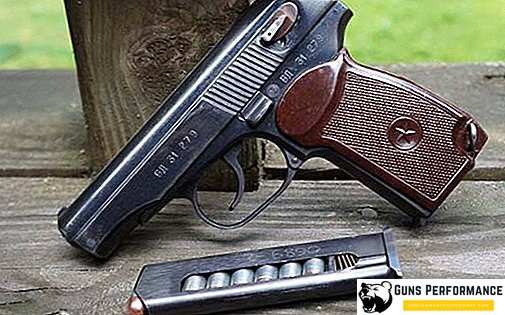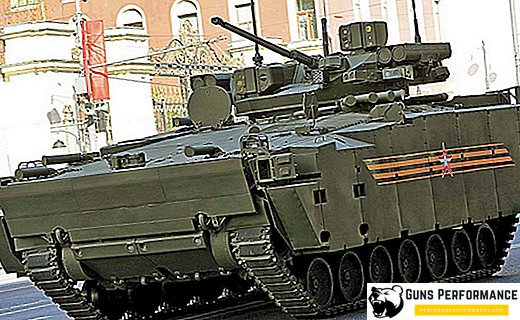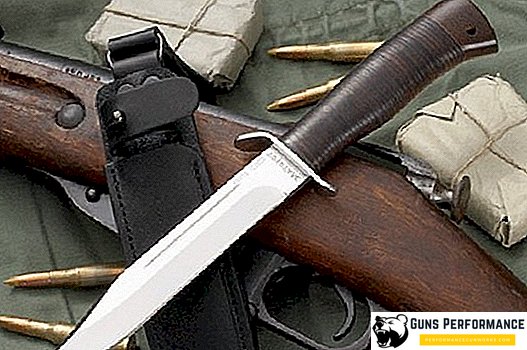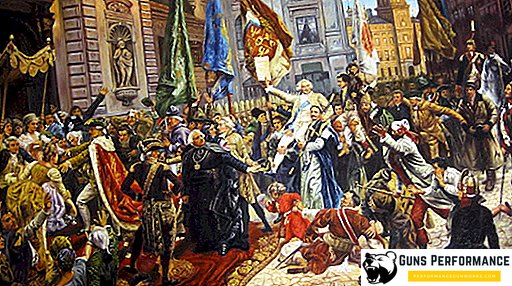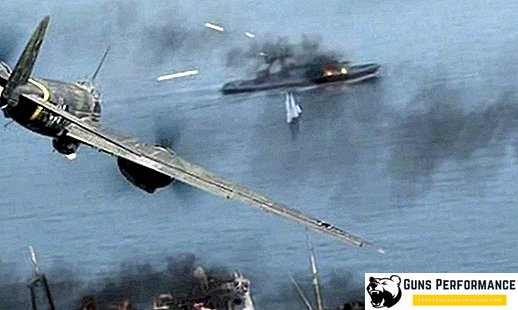Turkish yatagan is considered to be the legendary type of cold military weapons, which personifies the power of the Ottoman army. Even the appearance on the battlefield of firearms did not make this type of knives less important. Turkish janissaries, who perfectly mastered the steel blade, terrified the defending infantry of the enemy.
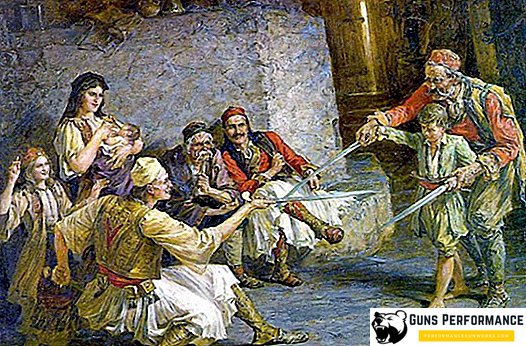
Yatagan - universal weapon
Since the era of the Crusades, there has been a continuous development of cold arms. The mixture of Eastern and European culture left an imprint on the technology of manufacturing weapons, on its appearance and, accordingly, on the technique of possession. If in Europe for a long time a long, heavy sword took root, then in the east the main weapon of war was the saber. The main reason for this separation was the technical equipment of the soldiers. European armies relied on enhancing warrior defenses. The infantry and especially the cavalry were chained in steel armor. To hit a warrior clad in armor, heavy weapons were required, simultaneously chopping and piercing.
In the east, cavalry prevailed in the army. The riders were dressed in chain mail and leather armor. The infantry was irregular and did not wear protective weapons. The main weapon of war was to be light and effective. Saber was in this regard the best option, allowing you to deliver strong and powerful slashes. The only drawback of such a weapon was the insufficient strength of the blade and the inability to deliver thrust. Despite such significant differences, the saber and the sword for a long time remained opponents on the battlefield. It was only with the flourishing of the power of the Ottoman Empire that the transformation of cold arms began, taking into account the experience of combat use and combat tactics. Began to appear universal types of cold arms, which have absorbed all the best qualities of the sword and swords. The Turks were the first to pay attention to the fact that, as a result of combining various properties and qualities, a universal weapon can be obtained. The Turkish army entered the curved sword scimitar, cold weapons of a completely new type.
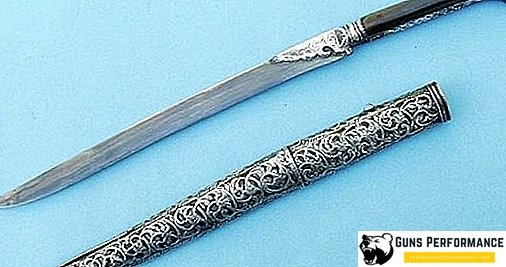
It turned out something between a short sword and a curve saber. The weapon allowed to apply chopping, cutting and stabbing blows. Unlike the saber, the blade had a double curved shape, but the tip and the hilt of the scimitar were in one line. The scimitar was balanced in such a way that the center of gravity was located closer to the grip. This quality significantly improved the steady position of the weapon in the hand, providing the most comfortable grip. The double-edged blade provided the ability to fight in any conditions and allowed the enemy to inflict deep stab wounds. The chop could be inflicted by the upper part of the blade, the cutting effect was achieved by the lower part of the blade.
To ensure the maximum effect of the blade during the fight, the scimitar was missing from the scimitar. This device, performing a protective function, often led to the weapon clinging to the clothes and armor of the enemy. The Turks got rid of this device by providing the warrior with a wider field for maneuver. The main method of weapon possession is the shoulder and wrist movement. A strong chop, supplemented by a slight movement of the hand, struck the enemy at the same time with a chopping and deep cut wound. The scimitar in the capable hands of the warrior became a deadly weapon, leaving no chance for the less experienced and vulnerable enemy.
The handle of the weapon had special devices - the ears, which firmly held the hand of the warrior, depending on the chosen grip. The form of the handle simplified the way of possession of the scimitar, allowing during the duel to easily change the hold. Depending on the social status of the warrior, the handle could be bone, metal or decorated with special decorative plates.
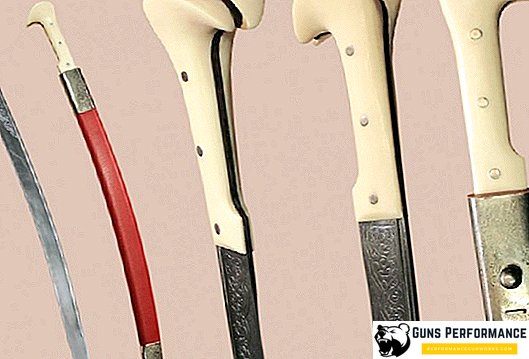
Today you can see in the museums of the world the scimitar, worn earlier by the Turkish nobility. There were often precious stones on the handle, and the blade itself was decorated with gold or silver carvings. For security purposes, weapons were worn in a sheath made of wood. Sheathed with leather or metal sheaths were considered an element of a military suit, so their appearance attached particular importance. Wearing a scimitar, shutting the sash in front, so the weapon could be easily reached with both the right and left hand.
The length of the weapon, which was adopted by the Turkish army, ranged from 65-95 cm. The blade itself was from half a meter to 75 cm. The sword was weighed only 800 g.
Application in combat and combat technique
Yatagan was mainly used in the Janissary Corps, which was a special forces of the Ottoman army. The appearance of the Janissaries was not accidental. The main fighting force of the Turkish army was cavalry, regular and irregular, but the fighting in Eastern Europe, where the Turks had to face a well-organized defense, the action of one cavalry was not enough. Irregular infantry units did not have the technical capabilities to successfully assault fortresses and fortifications. It required a completely new type of infantry, which has great technical and tactical capabilities. In the middle of the XIV century, during the reign of Sultan Orhad in the Ottoman Empire, a corps of janissaries — specially trained infantry — was created.
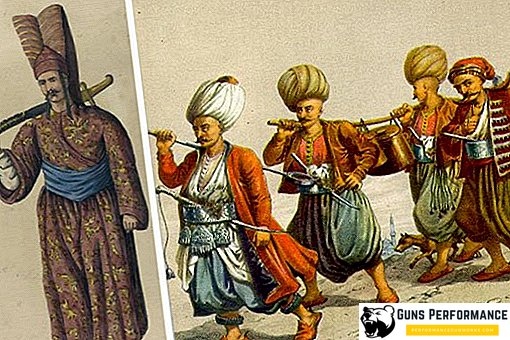
The Janissaries, together with the heavy Turkish cavalry, constituted the main fighting force of the Sultan's army, which has since become one of the strongest in the world. Having received for service instead of onion a tufeng - the Turkish equivalent of a musket, the Janissaries became Turkish musketeers. Unlike European shooters, who could always withdraw under the protection of infantry units. The Turks did not have such an opportunity, the Turkish janissaries after the salvo made had to independently continue the fight with cold weapons. The composition of the infantry units of the Turkish army was reflected in tactics. Turkish janissaries threw themselves at the most important sectors of the battle, where it was necessary to break the resistance of the enemy and overcome his tight defense. After the first volleys the Turks entered into a close battle, sowing panic, death and horror in the ranks of the enemy. The saber proved to be in such conditions more effective than the sword. Hacking and piercing weapons allowed warriors to operate successfully in close quarters of melee. In addition to the saber, the Janissaries received a scimitar, which became another convenient melee weapon.
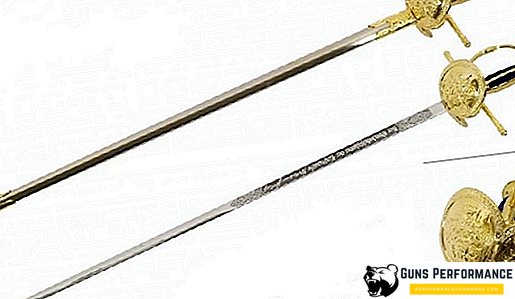
The Turks excellently owned a saber and a yatagan and in melee were substantially superior to the enemy fighting in the ranks. Compared with musketeers and spearmen, the janissaries had an undeniable advantage.
The art of owning this yatagan was based on the possibility of a constant change of grip. In martial arts, the Turks often used reverse grip, but during the bout they could easily go on direct grip, hitting the approaching enemy. Without a guard, a scimitar allowed to use the entire length of the blade for protection during the side beating. The blow was reflected by the blade, turned the tip down. To attack with a direct grip, slashing and sliding blows were made, from bottom to top, hitting the hips, abdomen and neck area.
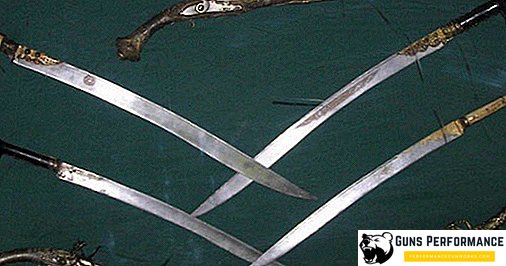
The Turks invented their own specific melee technique, using scimitars for this purpose. A light steel blade perfectly suited for sneaking brush strokes. Such a blow was effective against an opponent without protection or equipped with soft leather armor. Heavy top-down splitting blows with a consequent sweep cut the enemy's armor into crumb, and the human body received deadly deep wounds.
The Turkish warrior, equipped with a saber and a yatagan, acted much more efficiently than his opponent, armed with a sword and dagger.
The geography of the spread of weapons
The Janissaries Corps was an elite unit of the Turkish army, but not the only unit that was armed with a scimitar. Weapons have spread widely throughout the Middle East and in Egypt. Together with the Turks, these weapons were actively used in the Balkans and the Caucasus. Yatagan liked the local irregular militias.

The Turks, who managed to conquer almost the whole of Asia Minor by the beginning of the 15th century, introduced their tactics, military traditions and equipment to the art of war. In the armies of the rulers of Tunisia, Algeria and Egypt, there were special units that served as shock troops. Formed in most cases from mercenaries, such units were distinguished by excessive courage and cruelty. Bashibuzuk warriors armed with scimitar terrorized Europeans, who often became victims of a sudden attack by these units.
The Turkish yatagan is well known to the Russian soldiers who had been at war with the Brilliant Porte for a long time. Faced with insane bashibuzuki, armed scimitar and Napoleon's troops had. During the Egyptian campaign, his army suffered most from the sudden attacks of irregular units of the Egyptian troops.



